Design and E-rickshaws: Traveling Museums for a Clean Energy Future
novembro 13, 2017
Reposted from Design Fabric:
The Banaras Project – 100% Uttar Pradesh X Design Fabric
After months of teamwork, three selected artists along with the teams at Purpose Climate Lab and Design Fabric launched freshly designed e-rickshaws in India’s holiest city. We recount their journey here.
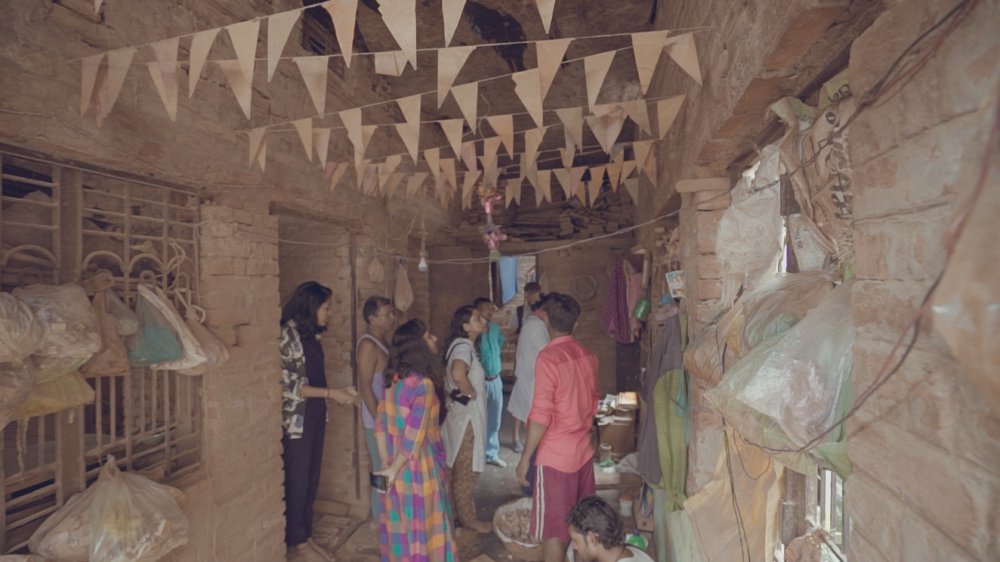
In October 2016, Purpose Climate Lab spearheaded the 100% Uttar Pradesh campaign. It was around the time of the state elections and the time when news was out of India’s vision to move towards 100 percent electric mobility by 2030. A beautiful coincidence that led to the beginning of something amazing. In July 2017, Design Fabric partnered with the second phase of the 100% Uttar Pradesh campaign to really push the message and build awareness around clean energy solutions through The Banaras Project.
The idea: To use Banaras’ e-rickshaws to highlight clean and green transportation by turning them into travelling museums on clean energy.
How: By launching a country-wide open call for entries that would lead to a design-sprint with three designers to create Taxi Fabrics for the e-rickshaws.
Over the next few months, the three chosen designers – Neethi, Tarini Sethi and Sumantra Mukherjee – along with the teams from Purpose Climate Lab and Design Fabric worked relentlessly to put together these travelling museums that were officially launched in Banaras on November 1, 2017.
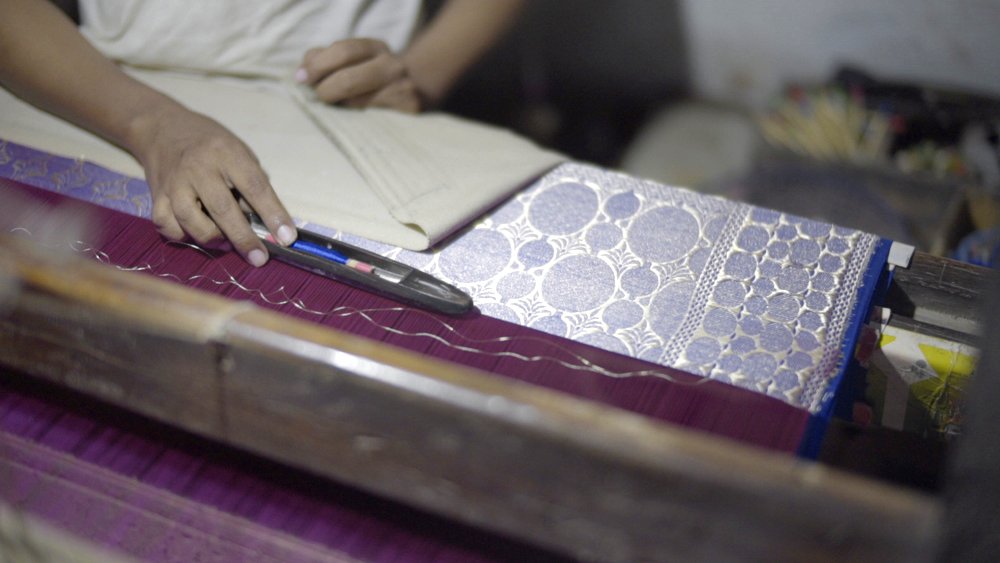 The artists at the Kashmiri Ganj (doll making workshop) and MadanPura (Banarasi Sari workshop)
The artists at the Kashmiri Ganj (doll making workshop) and MadanPura (Banarasi Sari workshop)
“With something like Climate Change, that feels so removed and larger than us, culture and art can make it more personal and make people feel connected”, says Sakshi Bhalla, senior strategist at Purpose Climate Lab. “The Benaras Project was in some parts, a way to create awareness on what solar energy means and the way we thought it would connect to citizens would be through public transportation, mainly the e-rickshaws that are a boon in an over polluted Benaras. So, we wanted to use these e-rickshaws as a medium to highlight clean and green transport and amplify conversations around a paradigm shift towards a more efficient transport system.”
When the campaign launched in late 2016, the team met with a lot of organisations and citizens and collaboratively came up with a public manifesto on the environment. The manifesto had five points to consider: 100 percent clean and renewable energy, strict emission standards, clean and efficient transport systems, waste management systems, and green and clean U.P. The power of people helped the manifesto reach the political party in the state and soon enough it was included in the political manifesto. “That was really good for us”, says Sakshi. “Now, in the second stage of the campaign, we’re focused more on solutions. Accordingly, this part of the campaign and The Banaras Project focuses more on the narratives around pollution. We believe that collectively and collaboratively we can achieve this clean and green environment.”
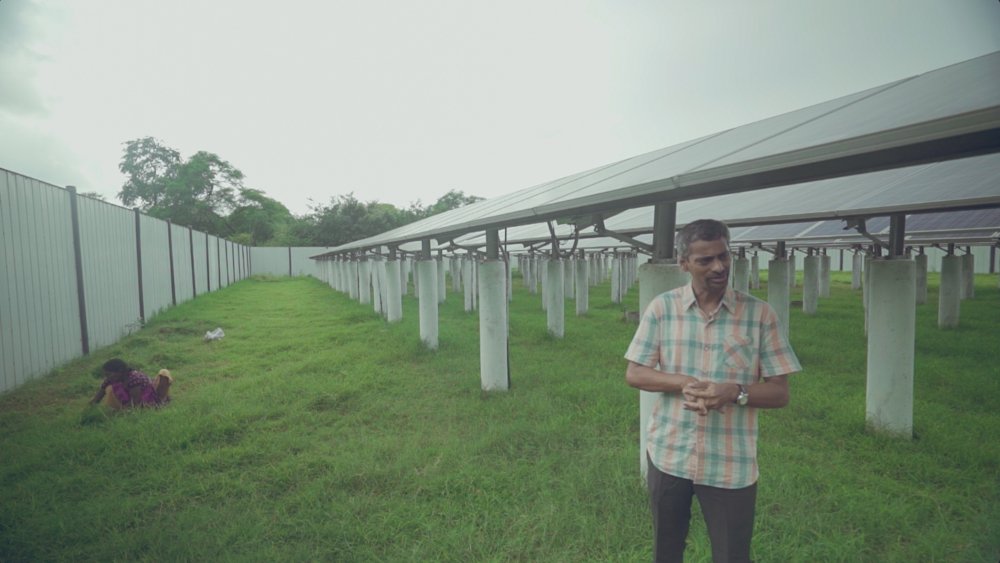 Meeting with Kumar Radhakrishnan, Registrar of the Rajghat Education Centre of the Krishnamurti Foundation India, a solar-powered school in Varanasi
Meeting with Kumar Radhakrishnan, Registrar of the Rajghat Education Centre of the Krishnamurti Foundation India, a solar-powered school in Varanasi
The residency program really allowed the three chosen artists to explore, understand and interact with the city and its people. In order to achieve that collaborative way of working, it was imperative to understand the mindset of the people and speak to them in a way that they would understand. “The designs really needed to be easy to grasp by anyone – a tea stall vendor or a university professor”, adds Sakshi.
What’s important to note, however, is that the process of building awareness wasn’t just one-sided. As Navdha Malhotra, social media strategist at Purpose Climate Lab adds, “On the other side, there is also a lot of work happening with the e-rickshaw drivers. We work with 15 of them and they have become amplifiers for us. They carry the message forward and talk to people about the benefits. So they are like spokespeople for the campaign.” Having people who actually ride the vehicles day-in and day-out, and getting them to champion the cause was really powerful and beneficial to the campaign.
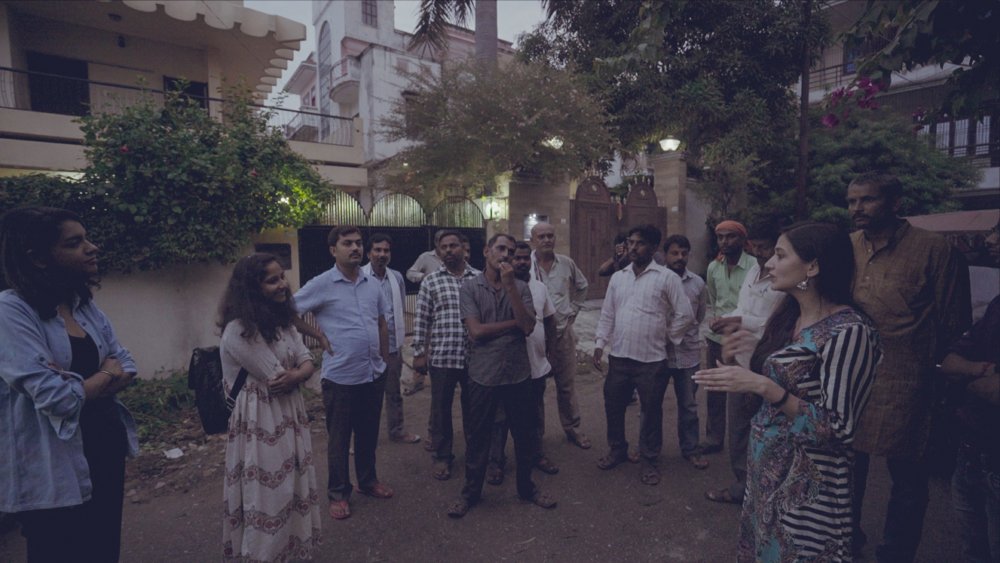 Group meeting with Sakshi Bhalla, the artists and the e-rickshaw drivers in Banaras
Group meeting with Sakshi Bhalla, the artists and the e-rickshaw drivers in Banaras
With the launch of the designed e-rickshaws in early November, it’s too soon the measure the effectiveness of the campaign. However, Sakshi says, “it is definitely going in the right direction. I would say it’s going along the way we hoped it would”.
“The designs are all really localised and a lot of the local aspects really standout. They’re simple and effective and they definitely communicate what we want them to communicate. It will be interesting to see how people interact with them”, adds Navdha.
But this is simply the beginning for the team. “The 100% Uttar Pradesh campaign goes on for the next six months and we will continue to use the e-rickshaws in all our engagements. The Swacch Urja Yatra that included the e-rickshaws designed by artists Neethi, Tarini Sethi and Sumantra Mukherjee and that launched in Banaras on November 1, will now move to Lucknow and Allahabad, stopping in between both these places in several districts to engage and connect with the local audiences”, quips Sakshi.
Ahead, to better understand the designs on the e-rickshaws, we interviewed the artists and got inside the inner workings of their minds.
Banaras Ka Ujwal Bhavishya by Neethi
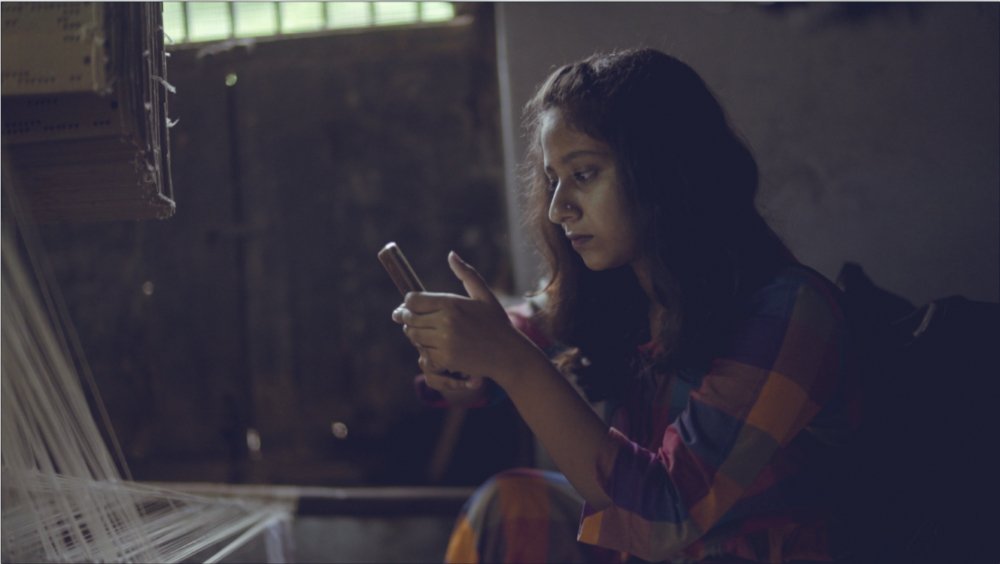
Having visited the holy city once, several years before the project, Illustrator Neethi was “super mesmerised and in awe of this magical land”. However, with the project’s strong brief on pollution and Climate Change, her visit this time around was accompanied with a different way of looking at things.
Among one of three designers chosen for The Banaras Project from a country-wide open call for entries, Neethi’s design was inspired by everything that she had observed and absorbed during her time in the city. “It was very organic in my head and I knew that I wanted to represent the ghats in a beautiful way and that I wanted to add magic to the landscape. I wanted to make an exaggerated version of everything being fuelled by solar power”, she emphasises.
After going through the design brief which focused on the positive aspects, solutions and way forward, Neethi came up with her concept, which was to focus on the “bright future of Banaras that you can create for yourself”. Her design engages citizens in a conversation and makes them feel like they are a part of the solution.
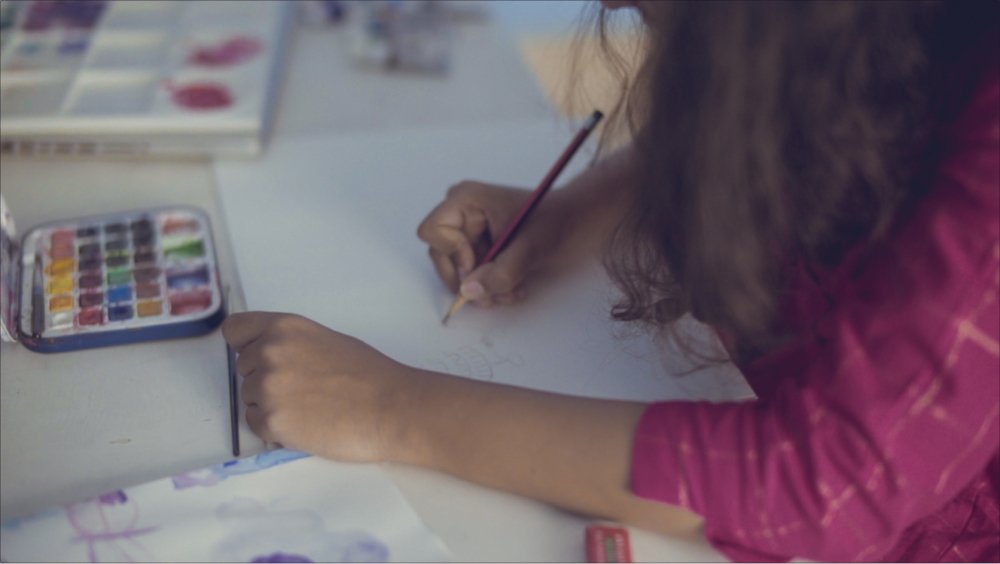
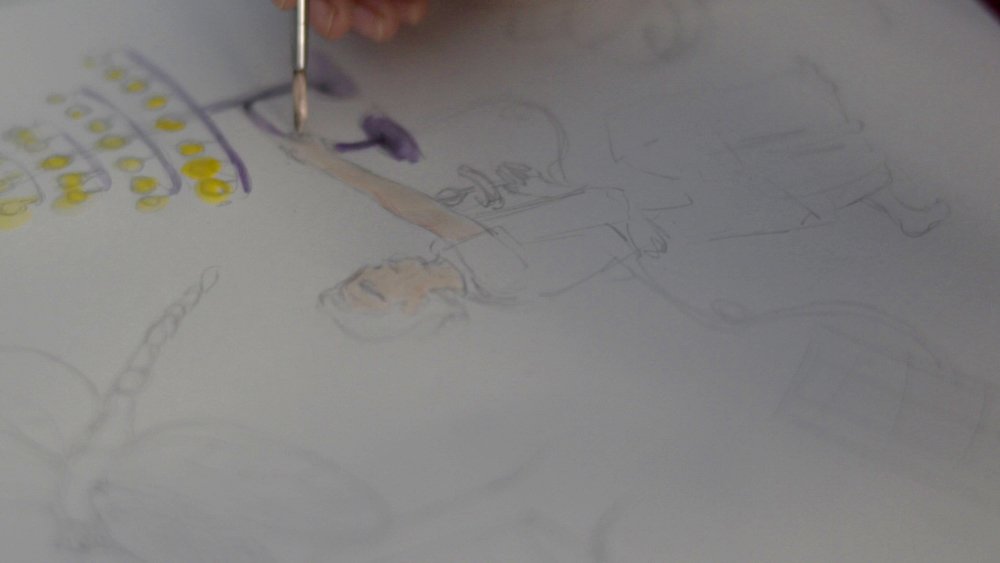
“Everybody wants a better future for their beloved city, which is why I thought it would be a great idea to show them how. My first thing was to mention that the city was powered by the people’s intention. I started off with ghats, then there are buffaloes and solar powered boats on the seat. The roof of my e-rickshaw has a message which reads, ‘Swacch Banaras Ke Liye Swacch Urja’, which translates to ‘For a clean Banaras, let’s switch to clean energy’. I wanted this message to be designed non-directional, in that it could be read from either side of the e-rickshaw. And then I just added a lot of fauna and made it a nice, happy little space.” The artwork showcases Banaras as a beautiful, green, lush space which is magical, aspirational, and has multiple things co-exisiting.
Her inspiration really just came from everyday things, walking around the city, exploring its history and meeting new people. One of the key reasons why she applied for The Banaras Project was because she’d be meaning to add more meaning to her work. Working on a project with an NGO in Mumbai earlier this year really made her see things differently. “Prior to my volunteering experience, I was always a little cynical as to how does one’s voice make a difference? But after speaking to the man who runs the NGO, I realised how powerful our voices can be. That really put things in perspective. For me, art that makes sense and touches people is art that I’m interested in and so I wanted to work with The Banaras Project to spread my voice forward.”
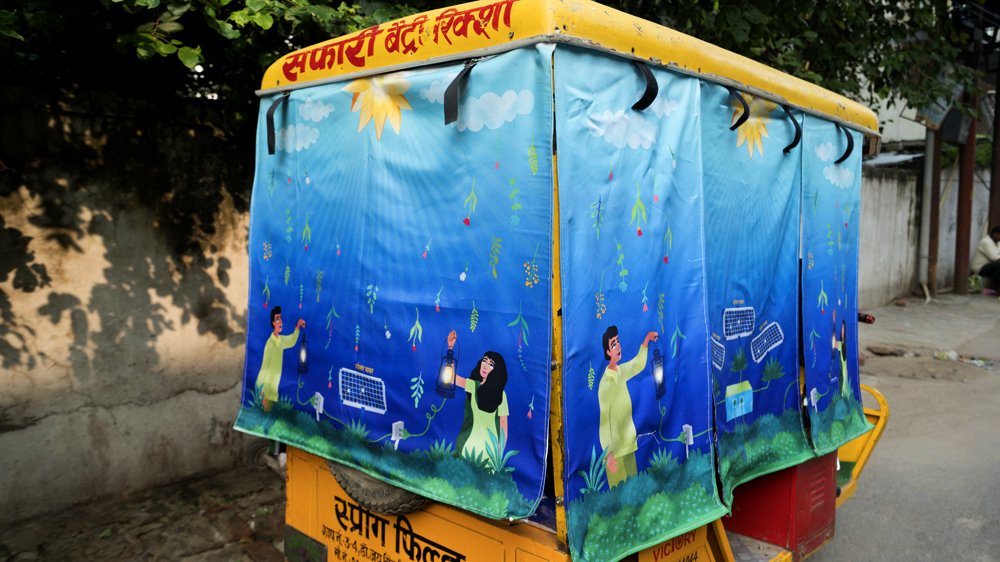
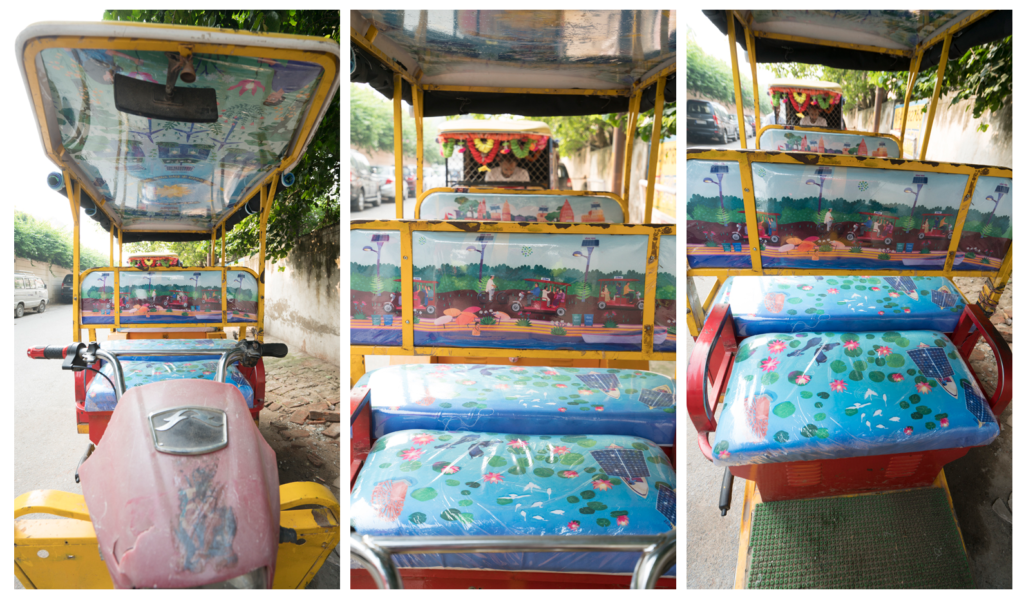
Over the duration of the residency, the project became really close to her. “I will hold it close to me throughout my life because it has been a trigger to a lot of things. This project opened my eyes to the other side of things. I believe my e-rickshaw carries a strong picture of what Banaras could be in the future, and how everyone can be flag bearers of clean energy solutions.”
Vahan Ganga Kinare Wala by Sumantra Mukerjee
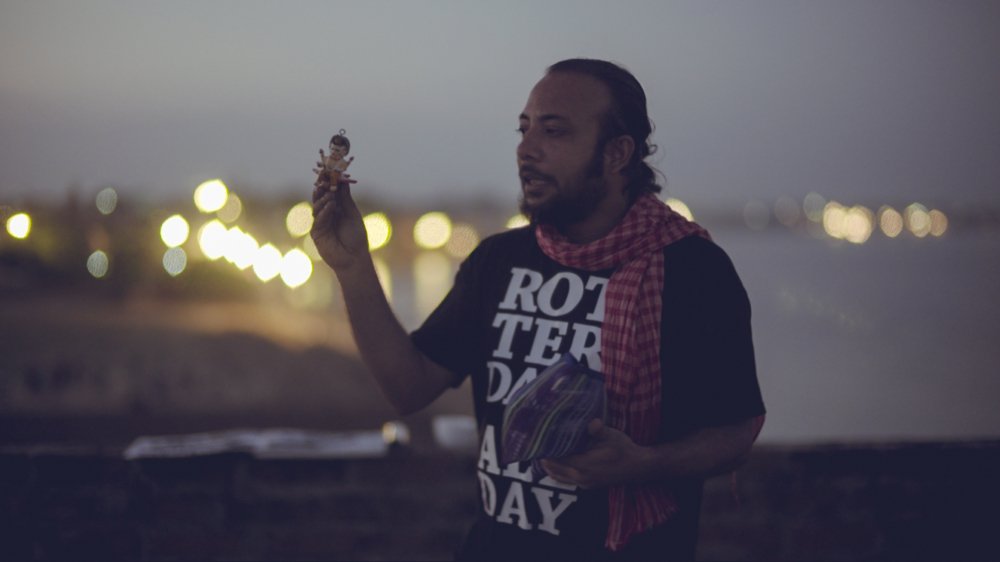
“As Indians, we are very complex and so is our culture and so, I didn’t want to look at only one point. My way of approaching the design was to include many layers of inspiration, many layers of influences and to really open up to this grand milieu of so many things together that is Banaras”, says artist Sumantra Mukherjee.
For his design, Sumantra’s concept was equal parts easy and equal parts complex. “I wanted to see how people would react to the Banaras craft and the religious overload given the situation we are in currently as a country. We are in a sort of hangover after years of the British colonial rule and it’s what I wanted to explore with my design”, he explains. To come up with his final design, the artist explored as much as he could – from talking to wooden (religious) doll makers in the city’s Kabir Nagar and the people who paint the e-rickshaws to understanding the local people and their way of seeing things.
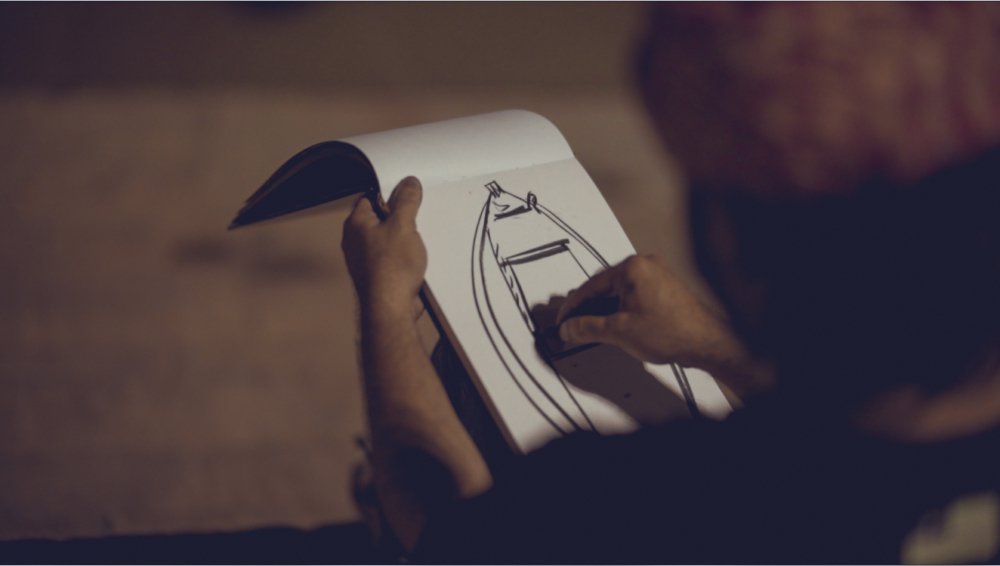
He didn’t want to simply talk about Climate Change, but instead wanted to focus on the possibilities of it. “In Banaras, there are a lot of religious people who believe in the history of the land. They’re set in their beliefs and don’t necessarily see the evils of Climate Change. I didn’t want to hurt these people and their beliefs because what they believe is wonderful, so I realised that I would have to take a twist on how I was going to explain the harmful effects of something like Climate Change to them.”
With a heavy reliance on the local culture as well as popular culture, Sumantra’s design also has a subtle yet imminent religious undertone. The back cover has a flying Hanumanji which is similar to the toys made by the artists in Kabir Nagar with a few extra environmental elements like the windmills on the parvat that he is carrying. The design goes beyond the structural landscape of Banaras and delves into a more subconscious one. Tarot-card parrots and palm readers share space on the back of a seat, both doling out solutions to the crisis as opposed to a solution to your future. Religious motifs sit alongside popular culture ones in an attempt to “connect to the audience in a closer sense”. Through his design, he “wanted to bring popular culture back into the visual conversation with the audience.”
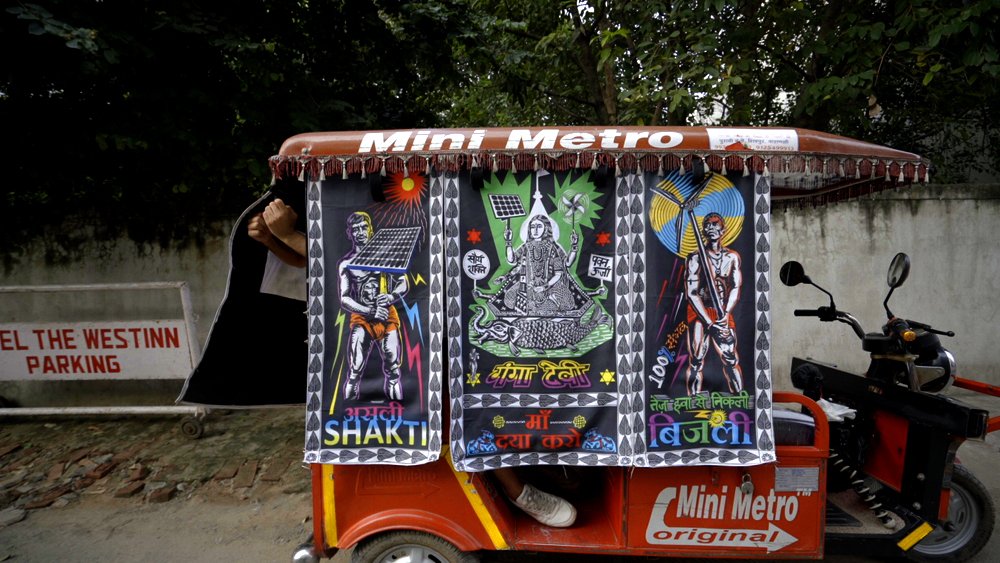
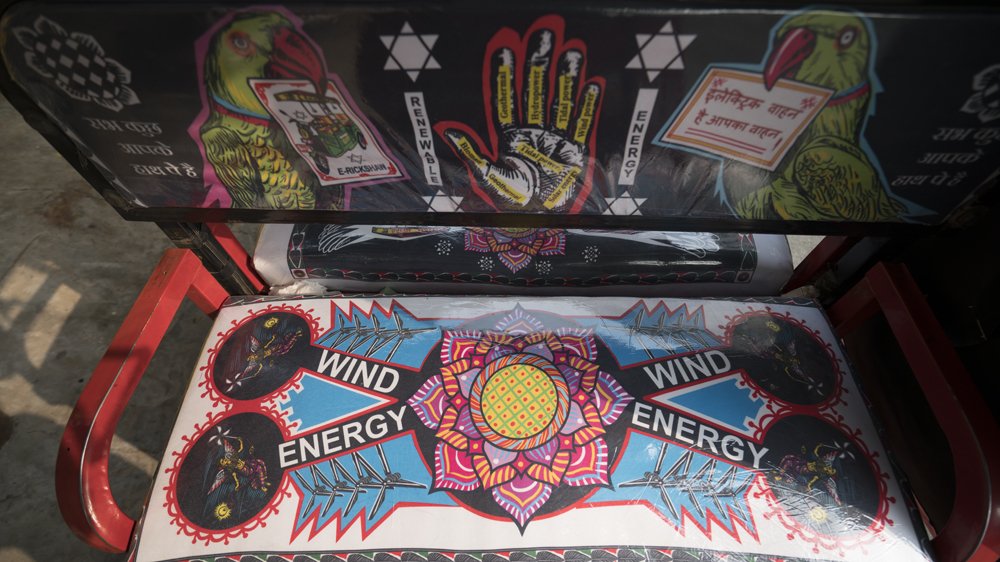
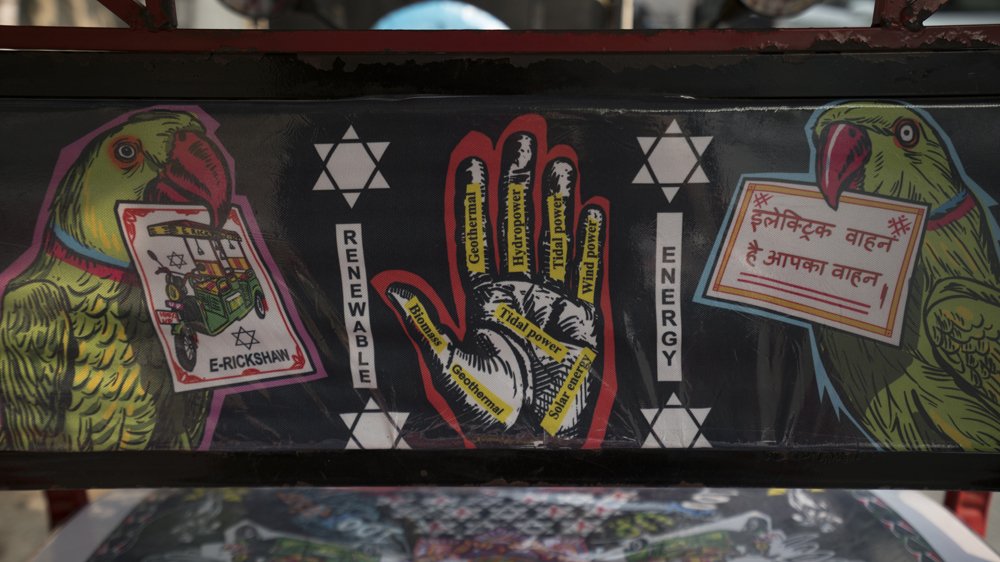
Ultimately, he adds, “as visual artists, we tend to sometimes keep an elitist mode on and I’m trying to break that, trying to diminish that margin between an artist and non-artist.”
Dhoop by Tarini Sethi
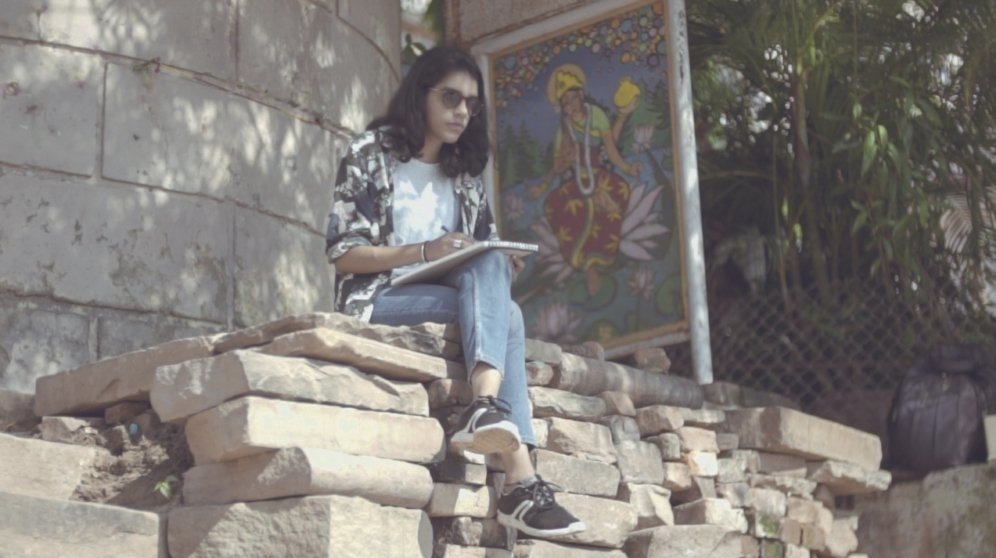
For Delhi-based, fine artist Tarini Sethi, The Banaras Project happened by surprise. “I think it was an itch in me to get out of Delhi for a bit and do something and so I applied. The next thing I know I had gotten in and that was it”, she reminisces.
Working with pen and ink and metal sculptures, Tarini defines her style of work as “romanticised figures in an architectural form”. A lot of her work surrounds making alternate universes where everything is beautiful and lush and perfect. And her concept for The Banaras Project was not far from that. “I wanted to create a Utopian Banaras where everything is beautiful and clean; a Banaras from few years ago when we didn’t have the glaring climate issue. That was my basic idea. I also remember that whenever I used to read about climate change, I realised that it is something that we think is so far away, but we fail to realise that it’s happening right now and it’s happening around us. And because of this, I wanted the design to be fun and not just a typical information style poster.”
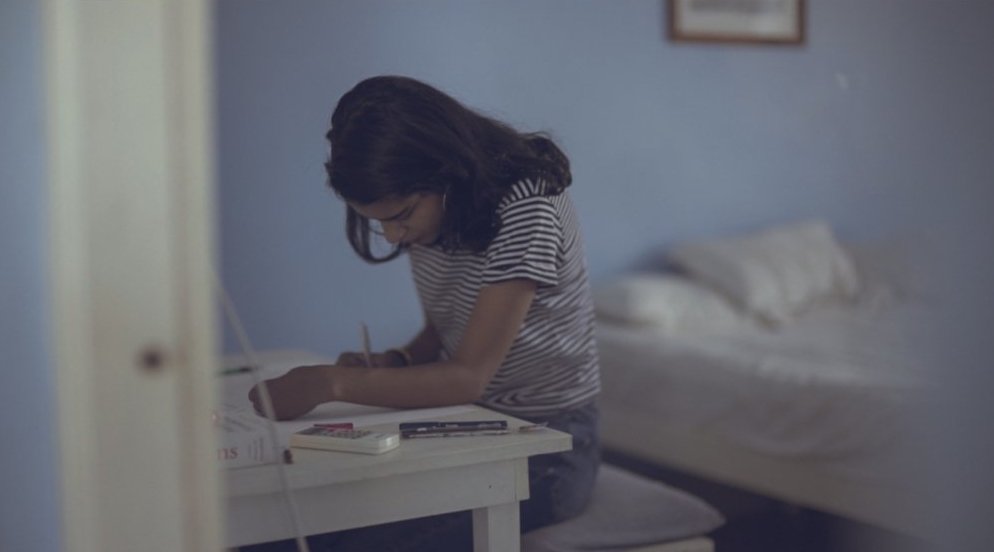
A quick look at Tarini’s e-rickshaw and you instantly grasp her idea. The Banaras in her design is clean with bright blue water, a spotless sky and a strong focus on the city’s infamous ghats. “My focus was on the ghats and the blue sky, because that’s what I knew of the city even before I visited.” There is also a heavy inclusion of local elements such as a heavy dose of people and the sprinkling of cows and goats. But a closer look reveals something with a deeper message. The Pratt Institute graduate’s design is riddled with suns. Bright yellow glowing orbs. Placed gently in the hands of the people, perched atop the heads of the animals and decoratively adorning the ghats. But all this isn’t without a reason. “If you see, in my design I’ve put in a million suns so that even people who have no clue about climate change form their own understanding of it. I wanted to my work to be obvious without being obvious at all. I wanted people to interpret it in their own way”, she adds.

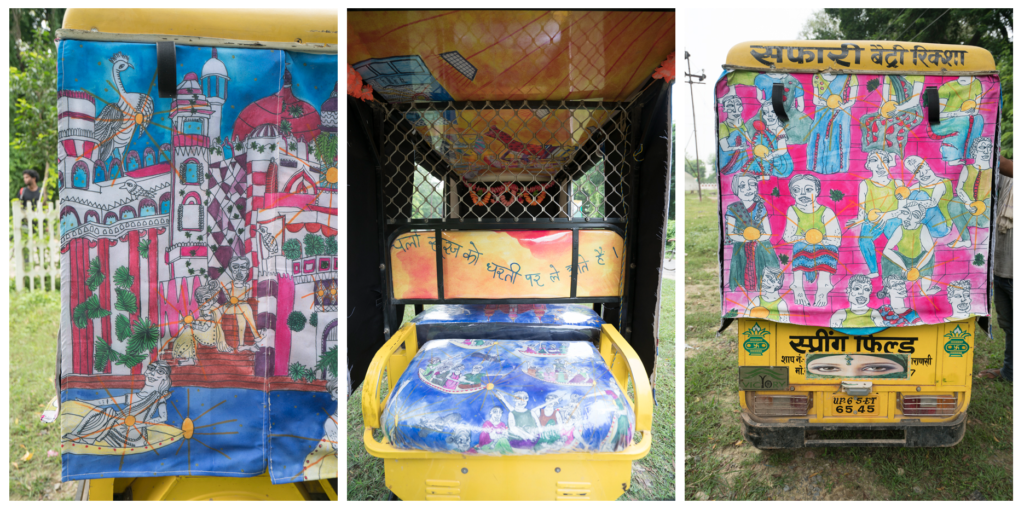
Speaking about her experience, she says, “the actual trip and the residency was amazing. I mostly work alone and don’t really meet that many other artists and designers, so it was nice to be around people who share the same interests as me. What I also found interesting was that usually, I have a free reign with a lot of my work. Whereas here I worked closely with a team and had to take a lot of direction from them. So, I would count the experience as one of the hardest things I’ve done since art school. It was intense but in an extremely fulfilling way.”
The Banaras Project is sponsored by 100% Uttar Pradesh.
Curated and Produced by Design Fabric
Um guia digital de combate à desinformação.